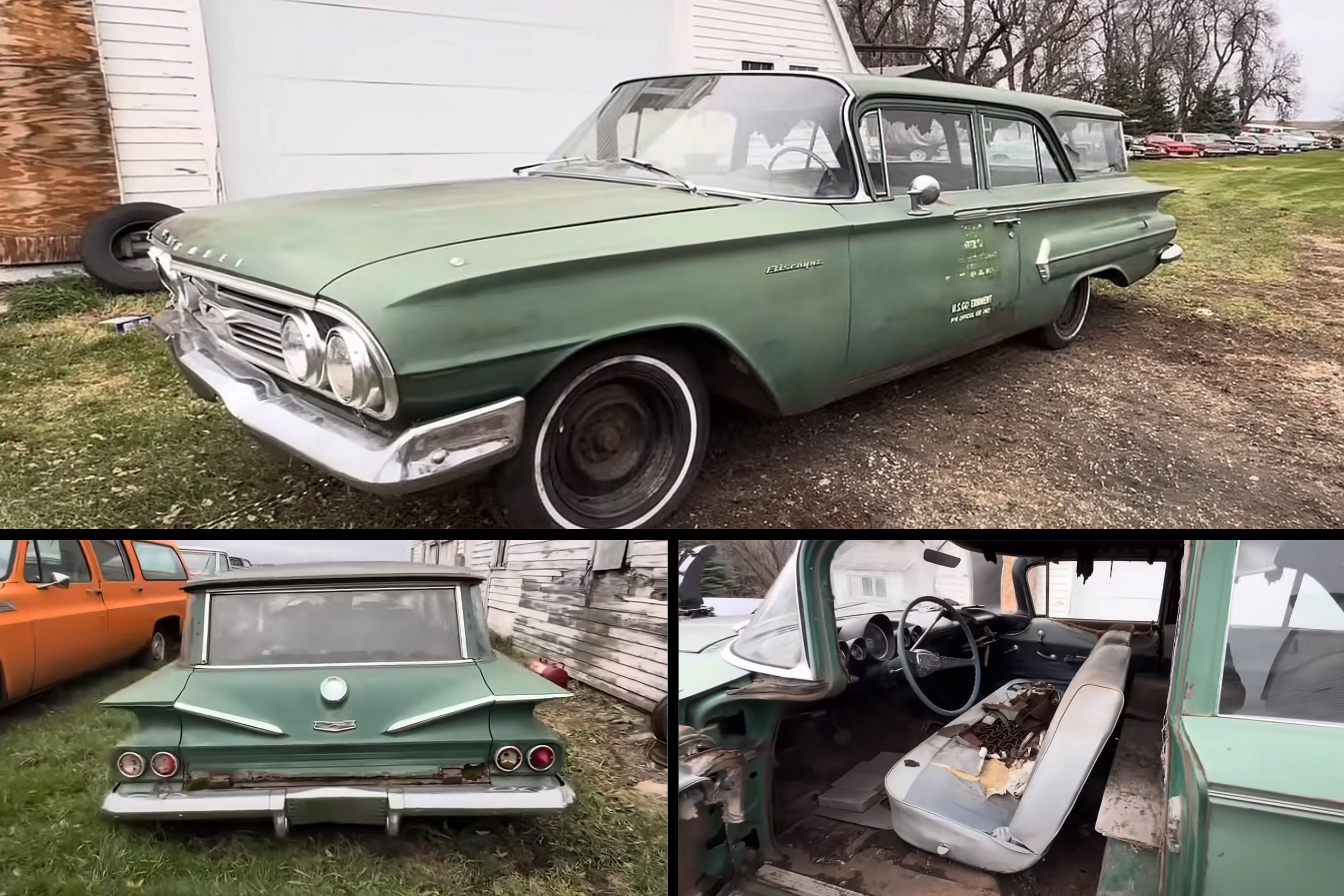Full-size cars will probably be replaced entirely by SUVs by the end of the decades, but these rigs were quite popular back in the day. Specifically, Chevrolet sold more than a million full-size automobiles annually from 1955 through 1965. That’s right, I’m talking about the iconic Tri-Five, the Bel Air, and the Impala.
These nameplates are among the most desirable classics nowadays but are also common junkyard and barn finds. With millions of them still out there, that’s far from surprising. And while the Impalas and the Bel Airs get rescued and restored regularly, the lower-trimmed Biscaynes become rust buckets or parts donors.
Simply because the current value of an entry-level Chevy is lower than the investment needed to restore one. And that’s an issue associated with many once sparsely equipped and affordable classics, not just full-size Chevrolets. But you know what? Some of these spartan rigs are actually rare. The two-door wagon you see here is a unicorn many of us will never see in the metal.
What makes this 1960 Chevy a rare sight? Well, for starters, it’s a two-door station wagon. This body style became popular in the Tri-Five era. That’s when Chevrolet offered three trims, including the 150 Handyman, 210 Handyman, and the Nomad. All three are rarer than the average Tri-Five. The Nomad is particularly scarce and among the era’s most sought-after and valuable Chevys.

The two-door wagon remained a thing in 1958, but it was renamed the Yeoman and relegated to entry-level duty. When Chevy redesigned its full-size lineup for 1959, the two-door wagon remained in showrooms under the Brookwood name. The body style went into the history books after 1960.
In addition to being a short-lived configuration, the two-door wagon is also scarce by production numbers. Chevrolet sold nearly 52,000 grocery-getters from 1958 to 1960. It may sound like a lot, but that’s 52,000 units out of four million full-size rigs delivered over the same period. Or just 1.2% of the total production. And far fewer examples are still around s ince these utilitarian vehicles weren’t viewed as potentially collectible cars.
Showcased by YouTube’s “Johnson Auto Ranch LLC,” this long-roofed Biscayne is one of only 14,663 two-door wagons made in 1960, the final year for this body style. But it’s much rarer than the regular production grocery-getter. That’s because it’s an ex-government car and sports a configuration that most likely wasn’t offered to the public.
Specifically, even though it looks like a regular two-door Brookwood on the outside, it has the layout of a Sedan Delivery model on the inside. And by that, I mean that it doesn’t have rear seats. The area behind the front bench is a wood-lined, flat surface. In layman’s terms, it’s a Sedan Delivery car with side windows and a tailgate—a configuration reserved for fleet vehicles.

What was it used for? Well, it’s unclear, but the door lettering suggests it was ordered by the US Department of the Interior and had something to do with “wildlife service.” I’d say it’s probably a former Forestry Department vehicle used to map parks and forest areas. The large cargo area was probably used to haul engineering equipment.
All told it is much rarer than a regular production two-door wagon. There are no official stats to run by, but we’re probably looking at one of less than 50 vehicles made like it and one of only a handful still around. Some say it’s a proper unicorn.
The wagon is obviously in poor condition after sitting for decades. The floors are rusty, some of the trim is missing, and the interior is a bit of a mess. The original inline-six is still under the hood, but it’s not running. It sounds like the kind of entry-level Chevy many would take to the scrapyard.
But the owner of this wagon isn’t willing to give up on this fleet-spec rig. He wants to give it a complete makeover and return it on the road. And following hundreds of comments he got on his channel, he wants to keep it as original as possible. I know this thing is not as desirable as a contemporary V8-powered Impala SS, but that’s tremendous news in my book. Because I love old wagons and classics with a story.
